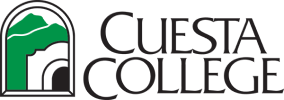
Program Summary
JOURNALISM - Associate in Arts for Transfer
The Associate in Arts in Journalism for Transfer degree (AA-T in Journalism) will help students achieve their academic and career goals by helping them acquire the skills needed to gather information from a variety of sources and prepare that information to share with the public using a variety of platforms. The AA-T in Journalism degree will provide courses for students so that they may succeed at college level journalistic writing, editing, news judgment, news ethics and elements of design. The degree will prepare them for success in a baccalaureate degree in journalism with the lower-division coursework required to transfer in the CSU system.
The Associate Degree for Transfer (AA-T or AS-T) is a special degree offered at California Community Colleges. Students who earn an AA-T or AS-T degree are guaranteed admission to a campus within the California State University (CSU) system, although not necessarily to a specific campus or major. Students who complete an AA-T or AS-T are given priority consideration when applying to a particular program that is similar to the student’s community college major and will be given a special GPA advantage when applying to CSU impacted campuses or majors. Students who are planning to pursue an AA-T or AS-T are strongly advised to meet with a counselor for additional information about this transfer program.
The Cuesta College AA-T/AS-T degree requires:
(1) Completion of 60 semester units that are eligible for transfer to the California State University, including both of the following:
(A) California General Education Transfer Curriculum (Cal-GETC).
(B) A minimum of 18 semester units or 27 quarter units in a major or area of emphasis, as determined by the community college district.
(2) Obtainment of a minimum grade point average of 2.0.
(3) Earning a “C” or better grade in all courses required for the major or area of emphasis. A"P" (Pass) grade is an acceptable grade for courses in the major.